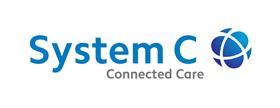The time has come for a digitally-enabled integration of health and social care, writes Jonathan Bloor

In association with
Most members of the public would be shocked to learn of the hours spent by health and social care staff every week, chasing basic information about the people they are supposed to be caring for – hours spent on hold or being passed around the system, waiting for call-backs, or just standing at the fax machine.
Creating a merged Department of Health and Social Care in 2018 signalled the country’s intention to integrate health and social care, but it clearly doesn’t go far enough.
Since Matthew Gould started as NHSX CEO, he has made clear that social care is a priority. He is right – if the country is serious about integrating health and social care, it is crucial that the digital infrastructure to deliver this is not forgotten.
End-to-end digital workflows
To set the scene, the main interaction between hospitals and social care is generally through the admission, discharge, withdrawal process. This involves an archaic combination of paper, printing, scanning, emailing and faxing, with people at either end of the process on hand to send, receive and re-enter data.
Many in the health sector assume lack of digitisation in social care is to blame. This is not the case – councils are more digitally mature than many hospitals. But like health, the digitisation and workflows are confined to the institution. A social worker is often the last to know that a client has been admitted to hospital, or that a vulnerable, lonely adult has three interactions with the health and care system one week and then nothing for months.
New structures, teams and roles have emerged to cope with the complexity of people’s interaction with services – Integrated Care Systems, Multi Agency Safeguarding Hubs and so on. These focus holistically on the individual, recognise the importance of social determinants and try to move away from episodic and reactive care.
Digitisation needs to support this re-imagining of integrated health and social care, with three key components:
1. Data has to be shared appropriately between settings. At the most basic level, doctors and nurses in a hospital need to know whether a patient has a social worker, who they are, whether that person has any safeguarding issues, or a social care package. A social worker needs to know someone’s diagnosis or condition, their medication, and when and where they are admitted.
2. Workflows like ADWs must be digitised end-to-end to provide transparency, efficiency and reliability.
3. Health and social care workers need 21st century digital tools to help them coordinate care.
Most important, we must avoid the classic pitfall of digitising in silos and as an afterthought. Standards which span health and social care are vital to data-sharing and joined-up workflows.
There is hope:
- The LHCR programme is accelerating adoption of shared care records which integrate health and social care data. In the St Helens place-based care system, the CareCentric shared record is a key enabler in transforming the way in which health, care and community services are organised and delivered on the ground.
- End-to-end digital workflows spanning health and social care now exist. Whittington Health pioneered digitising the ADW process through integrated workflow between our acute EPR system and the Liquidlogic social care system. This work has informed the development of MESH (Message Exchange for Social Care and Health). We now need to adopt this at scale.
- The mobile care coordination tools also exist to connect health and social care workers, using secure instant messaging and other team-based features. Buckinghamshire ICS has procured our care coordination platform, CareFlow Connect, for this very purpose.
These components are not the whole story. It requires effort and commitment – the NHS has invested heavily in CP-IS, a data-sharing project designed to protect society’s most vulnerable children, but has yet to integrate it with existing EPR systems at scale. The time has surely come for a digitally-enabled integration of health and social care.
For more information, click here































